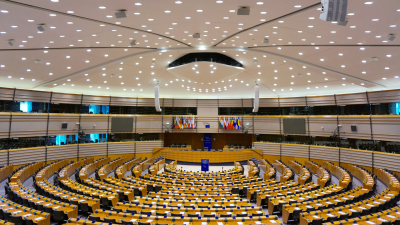How Europe is Pioneering AI Regulation to Safeguard Human Rights and Values
The transformative power of artificial intelligence (AI) is reshaping our world in remarkable ways, revolutionising industries, enhancing efficiency, and enabling groundbreaking innovations. However, with great technological power comes an equally significant responsibility, as AI also presents challenges and risks to human rights, democratic values, and environmental preservation. Recognising these complex dynamics, the European Union (EU) has embarked on an unprecedented journey to establish the world's first comprehensive legal framework for AI. This pioneering initiative seeks to ensure that AI is harnessed in a human-centric manner and firmly anchored in ethics.
Termed the "AI Act," the European Commission unveiled this groundbreaking legislation in April 2023. It adopts a
risk-based approach and institutes distinct obligations for AI system providers and users, contingent on the level of risk inherent in these technologies. Furthermore, the AI Act defines the very essence of AI and, significantly, introduces a European Artificial Intelligence Board to supervise its implementation.
The Key Features of the AI Act
The AI Act classifies AI systems into four distinct categories: "Prohibited," "High-risk," "Limited-risk," and "Minimal- risk."
Prohibited AI systems encompass those AI applications that present an unacceptably high risk to human safety, fundamental rights, or the environment. These include systems that employ subliminal or manipulative techniques, exploit vulnerabilities, or are used for social scoring or mass surveillance. The AI Act unambiguously prohibits such systems and imposes substantial fines for violations.
High-risk AI systems are those applications that wield significant influence over people lives or represent a genuine  threat to their health, safety, or fundamental rights. This category encompasses AI systems deployed in critical sectors such as healthcare, education, justice, law enforcement, transport, and energy. The AI Act mandates adherence to stringent obligations for providers of high-risk AI systems. These include ensuring transparency, traceability, accuracy, human oversight, and robustness. Meanwhile, users of high-risk AI systems must adhere to specific rules, such as conducting rigorous risk assessments and promptly reporting incidents.
threat to their health, safety, or fundamental rights. This category encompasses AI systems deployed in critical sectors such as healthcare, education, justice, law enforcement, transport, and energy. The AI Act mandates adherence to stringent obligations for providers of high-risk AI systems. These include ensuring transparency, traceability, accuracy, human oversight, and robustness. Meanwhile, users of high-risk AI systems must adhere to specific rules, such as conducting rigorous risk assessments and promptly reporting incidents.
Limited-risk AI systems comprise applications that entail certain risks to individuals' rights or interests but do not jeopardise their safety or well-being. These include AI systems employing emotional recognition, biometric categorisation, or recommender systems on social media platforms. The AI Act mandates transparency obligations for such systems, including disclosing AI-generated or influenced content or services and providing information regarding their purpose, logic, and expected outcomes.
Minimal-risk AI systems encompass those applications that pose no or negligible risks to individuals or the environment. This category covers many current and future AI applications, such as spam filters, video games, and chatbots. The AI Act refrains from imposing specific obligations on such systems but encourages providers and users to adhere to voluntary codes of conduct and best practices.
The Advantages of the AI Act
The AI Act aspires to create a unified market for trustworthy and lawful AI within Europe. This endeavour aims to stimulate innovation, enhance competitiveness, and safeguard the rights and values of individuals. The key benefits of the AI Act include:
Ensuring Safety and Quality: The AI Act establishes common standards and requirements across the EU, guaranteeing the safety and quality of AI systems.
Fostering Trust and Confidence: By insisting on transparency, accountability, and human oversight of AI, the AI Act promotes trust and confidence in the technology.
Safeguarding Fundamental Rights: The legislation protects the fundamental rights of individuals and groups by mitigating discrimination, manipulation, or harm caused by AI.
Supporting Innovation and Development: The AI Act fosters innovation and AI development by creating a level playing field for providers and users. It provides legal certainty and guidance, enabling them to navigate the AI landscape effectively.
Enhancing Cooperation and Coordination: The AI Act encourages collaboration among EU member states, authorities, stakeholders, and international partners on AI-related issues. This ensures that AI regulation remains a dynamic and adaptable process, reflecting the rapid evolution of technology.
The Road Ahead for the AI Act
Acknowledging that the AI Act is currently in the draft proposal stage is essential. It must be approved by the European Parliament and the Council of the EU before it can be enshrined in law. The entire process could take up to two years or more, contingent on negotiations and potential amendments. The EU aims to ratify and effect the rules by the end of 2023.
The AI Act represents a monumental leap toward establishing a global standard for regulating artificial intelligence. It mirrors Europe's vision of an AI landscape that places humanity and ethics at its core, striking a delicate balance between innovation and protection. As AI technology evolves rapidly, monitoring and adaptation of regulations will be essential. The European Union is committed to ensuring that AI serves the betterment of humanity while upholding its core values.




